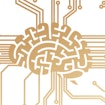
J. Elliott Robinson plans to create gene therapies to address cognitive symptoms in neurofibromatosis type 1 (NF1) using a combination of protein engineering methods, CRISPR activation-based approaches to regulate endogenous gene expression and new systemic AAV capsids that freely cross the blood-brain barrier after intravenous administration. The resulting vectors will be tested in NF1 model mice in vivo and disseminated to the larger research community for additional validation.

